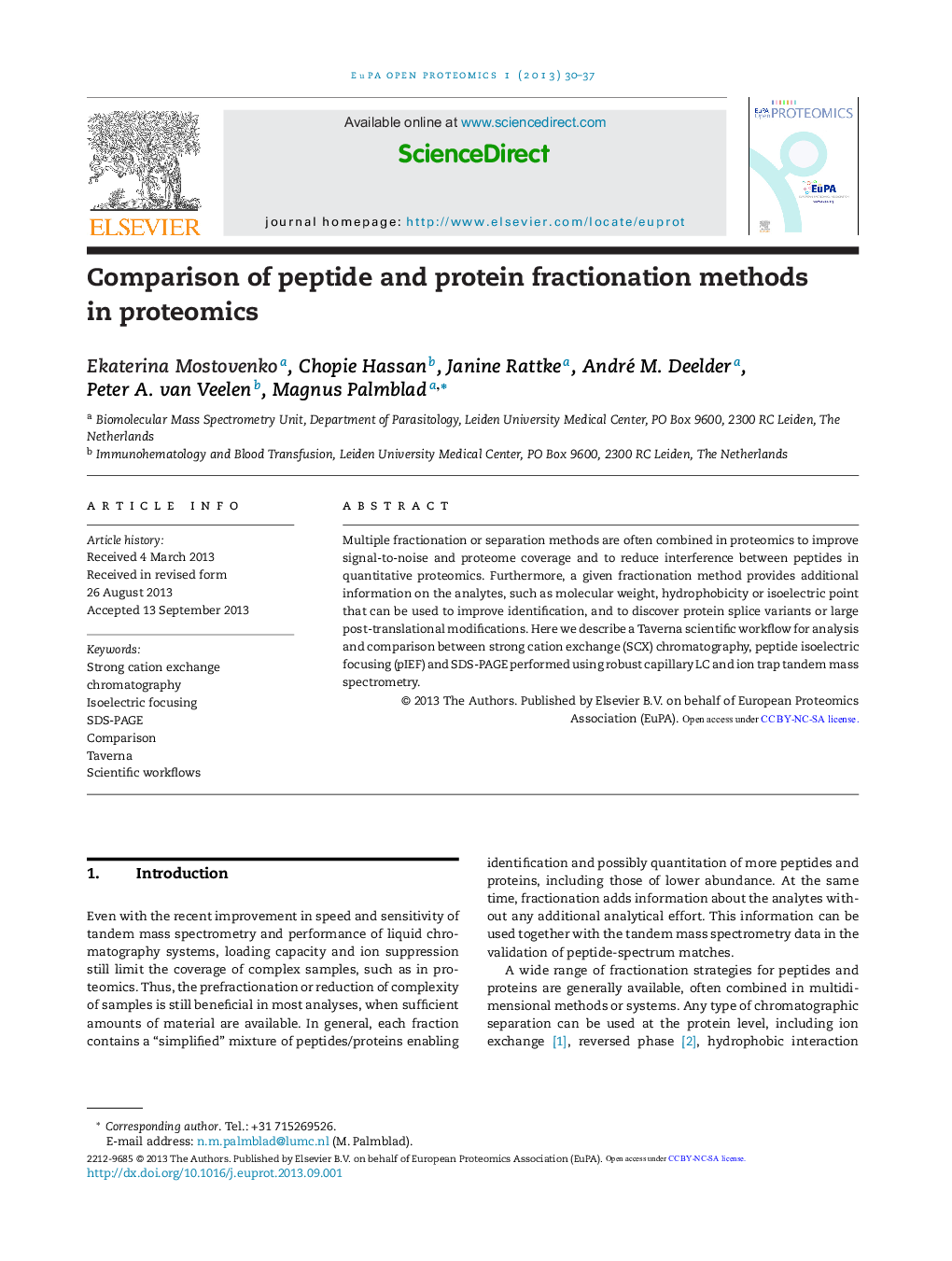| Article ID | Journal | Published Year | Pages | File Type |
|---|---|---|---|---|
| 1184017 | EuPA Open Proteomics | 2013 | 8 Pages |
Abstract
Multiple fractionation or separation methods are often combined in proteomics to improve signal-to-noise and proteome coverage and to reduce interference between peptides in quantitative proteomics. Furthermore, a given fractionation method provides additional information on the analytes, such as molecular weight, hydrophobicity or isoelectric point that can be used to improve identification, and to discover protein splice variants or large post-translational modifications. Here we describe a Taverna scientific workflow for analysis and comparison between strong cation exchange (SCX) chromatography, peptide isoelectric focusing (pIEF) and SDS-PAGE performed using robust capillary LC and ion trap tandem mass spectrometry.
Keywords
Related Topics
Physical Sciences and Engineering
Chemistry
Analytical Chemistry
Authors
Ekaterina Mostovenko, Chopie Hassan, Janine Rattke, André M. Deelder, Peter A. van Veelen, Magnus Palmblad,
